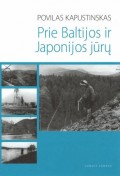 Authors:
Kapustinskas, Povilas
Authors:
Kapustinskas, Povilas Published in: Vilnius
Published on: 2009
Publisher: Versus aureus
The book takes us to a nearly but still memorable especially among elders times when we were still in the Soviet Union. The writer analyzes 1950-1962 years. Thus, the author tells us his twelve years journey that distacting him from Lithuania to the Far East.
“Prie Baltijos ir Japonijos jūrų“ – it is an autobiographical book. Most parts of the story author devotes to describe his geological works. After his history-philology studies, he realised that nature is more attractive to his beliefs. Together with the author we are exploring various towns and villages of Lithuania. But being more adventurous he dares to take us through the great cities of the Soviet Union. After reaching Chinese walls, in Western Sajan, in Dzugdzur and other places he also describes his geological excavations. Moreover, the book focuses on the history as well, especially on East Asian history. He describes his friends journeys in China and Vietnam. He analyzes the current economic problems in these countries and compares them to the Soviet Uninion‘s. It also tells the story of the Korean war. In addition, the author describes his journey and thoughts in Manchuria.
This book is also fascinating because Povilas Kapustinskas illustrates his time of his life by capturing moments from the journey. There are plenty of photographs from author‘s personal archive. Because of that readers are able to understand much better his hard work, to see and compare the places he has been to. The writer reveals his life not only by the text but also by the visual material.
Povilas Kapustinskas grew up in Siciunai in small town in Lithuania. After compulsory military service, in 1954 he finished secondary school in Vilnius. He was working as a freelance employee of the expedition to Western Siberia and the Far East. The author wrote a diary in which he wrote down how and in what sort of environment people live, what happens next to the country and the
